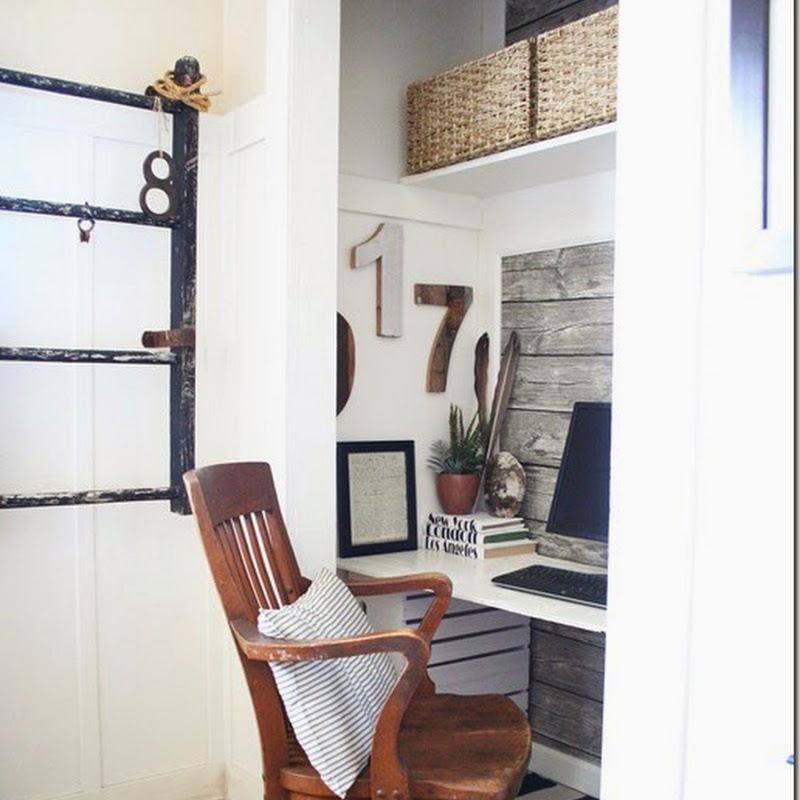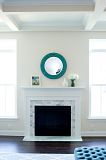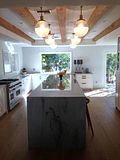I'm not really a big fan of painting outdoors because it is hard to get comfortable and capture the scene before the light or clouds change or the bugs drive you batty and I really don't feel comfortable with people looking at the art I am working on. So I have built a stock of inspiring photos that I can use when I want to paint something from the comfort of my desk.
One thing that seems to hold people back from working on their photography skills is thinking they need to have fancy-schmancy camera equipment. I want to assure you that the small point-and-shoot cameras and even the tablets and phones these days take great photos. They aren't as flexible in terms of exposure and focus and they may not do well in low light conditions, but in most situations they take great photos. And with even the most basic camera you can work on improving your composition and lighting skills and thereby improve your photography.
A couple of years ago my husband bought me a good camera, but prior to that I used a point-and-shoot camera that cost no more than $150 to take all my pictures. The only vacation I have taken my good camera on was the most recent trip this past summer to Newfoundland.
While I'm not a photography expert, I have learned a thing or two by taking so many pictures for the blog. So here are some tips I have compiled to help take better photographs.
1. Vary the light source. Typically, we are advised to have the light source behind the photographer, but sometimes the best shots are when you do something a little creative with the lighting. Look for low lighting from the side to create nice contrasts of light and dark. Or try looking toward the sun which can create interesting photos since you get strong shadows, sun flares, and highlights on semi-transparent things like flower petals.
Speaking of light, the best time of day for photos is the "golden hour" - the hour or so just after sunrise and before sunset. You get lovely indirect warm sunshine and avoid the harsh shadows and glare of midday lighting.
2. Take pictures from unusual angles. By positioning yourself down low and looking up at something or up high and looking down on it, you will get more interesting photographs.
3. Move in close. Your photos will be much more interesting and engaging if you move in close to your subject.
4. Frame your photo. Most scenes (and landscapes in particular) appear to have greater depth if the photo is framed with branches or plants or even by looking through a door or window.
5. Keep the background simple. Often the sky can provide a nice simple background, but if that isn't possible then try an uncluttered row of trees or a field of grass. Most importantly avoid having distracting objects like wires or poles coming out of someone's head.
In addition, it is helpful to keep a lot of white space (blank areas) around the object being photographed which helps draw the viewers eye toward the point of interest.
6. Practice the rule of thirds. Photos generally look best with an off-centre composition. Try to have the main dividing lines (like shorelines or tree trunks) or focal point in a photo be approximately a third of the way from the edge. While off-centre doesn't have to be exactly thirds that is what is generally recommended and many camera lenses and editing software have grid lines at the one and two-third lines already marked on them.
7. Make sure the photo is crisp and clear. Work on keeping the camera as still as you can - use your free hand to support the camera and hold your breath while you take the photo. You can also use a tripod or at least lean against a chair back or wall or tree trunk when the lighting is low so you can get as clear a photo as possible.
Also try taking several shots of the same scene changing the focal point in the pictures to see what works best. The same scene looks different when the tree branches are sharp and clear and the ground is out of focus as compared to focusing on the moss on the ground while the tree branches are softly blurred.
8. Repetition is a good thing. There is something so appealing about repetition of objects in a photo. Often there is no real focal point in this type of photo, but the interest is in the texture, colour, and lighting of the objects,
**********************
Once you are home and have looked at your photos you may realize that they could do with a little tweaking. That's where photo-editing software can help. There are lots available for free online - the one I use is Picmonkey. Photo-editing is useful for all the usual things like straightening the photo, cropping it, and adjusting the exposure, but there are a few specific things you can do that may help you use the pictures for painting. You can make your colour photos black-and-white which allows you to observe the light and dark tones in the scene. Some artists do a pre-sketch to plan their painting indicating where the shading is in the picture. Making your photo black-and-white will assist you in doing this.
You can also use photo-editing software to enlarge certain areas which often makes it look abstract in the process. You can also blur, pixalize, or change the colour of pictures to help you create interesting effects that may inspire a more abstract painting. I have done a few as examples to show you what I mean.
And finally, I use Pinterest (even though you sometimes annoy me Pinterest) to build a photo inventory. I have boards labelled Scenes I Want to Paint and Painting and Sketching Inspiration. I think they are pretty self-explanatory, but oh so useful.



















.JPG)











a.jpg)



.jpg)














.JPG)






%2Ba.jpg)









%2Ba.jpg)
%2Bb.jpg)
%2Bc.jpg)
%2Bd.jpg)
%2Bg.jpg)















































































































































































.jpg)



















































































.jpg)



























Wow - where do I begin. Your photos are fabulous. Your students are so lucky to have you give them this info. I'm a nature photographer and love to see and learn new ideas - or have old ideas refreshed and restated. I think my two favorites (very hard to choose) are the bird on the foggy water and the school girls in their white sneakers playing a game on the dirt - great contrast and composition. But I loved each one - and I'm book marking this for future reference - I'm sure I'll want to look at it again and again. I use picmonkey too - love the editing possibilities with it.
ReplyDeleteWow...you just gave out a semester's worth of information in this post!!! As a photographer only for myself, I can tell I have so much to learn!! My pictures will improve because I'm bookmarking this post and I'll be back for a refresher course!!! Thank you!!!!!
ReplyDelete